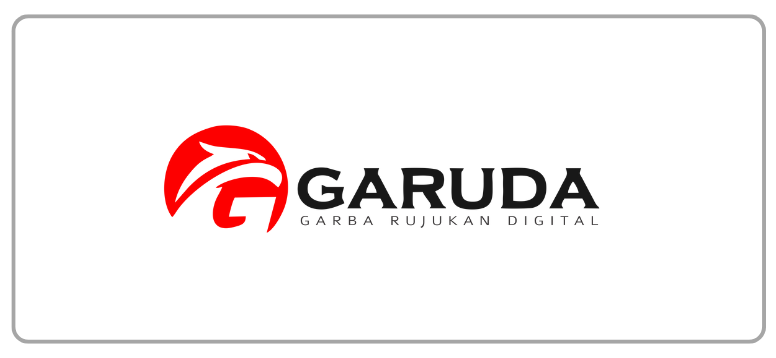Organizational Lerning and Strategy: Information Processing Approach of Organizaitonal Learning to Perform Strategic Choice Analysis
DOI:
https://doi.org/10.21512/tw.v18i1.4050Keywords:
organizational learning, strategic choice, alignment, strategy space, information processingAbstract
Study of organizational learning required to discuss the issue of strategy to understand company’s organizational knowledge and how company applied the organizational knowledge toward the changing of the environment. Method of the analysis for this research was based on desk research thoroughly on the existing literature. This research analyzed the viewpoints of different researchers in organizational learning and elaborates the information processing abilities approach of Organizational Learning (OL). Based on desk research on literature, the research discussed information processing approach to explain organizational learning and strategy choice by describing the importance of information and assumptions, the activities of knowledge acquisition, interpreting and distribution of the knowledge, typology of exploitation and exploration learning. It proposed the importance of the company to perform alignment between internal managerial process arrangement and external environment while doing the learning, based on the strategic choice space, as theatrical clustering map of the learning, the fit, the alignment, and the alliances of the organization. This research finds that the strategic space might help the analysis of balancing between exploitation and exploration learning while applying the analysis of varied firm characteristics, strategic orientation, and industrial environments.References
Anderson, E. T., & Simester, D. (2011). A Step-by-Step Guide to Smart Business Experiments. Harvard Business Review, 89 (3), 98-105.
Barney B. J., & Hesterly, W. S. (2015). Strategic Management and Competitive Advantage. Georgia: Pearson.
Burnes, B., Cooper, C., West, P. (2003). Organisational learning: The new management paradigm? Management Decision, 41(5/6), 452-464. Retrieved from Academic Research Library database.
Burton, R. M. , Obel, B., DeSanctic, G. (2009). Organizational Design: A Step-by-Step Approach. New York: Cambridge University Press.
Chiva, R., & Aligre, J. (2005). Organizational Learning and Organizational Knowledge: Towards the Integrations of Two Approaches. Organizational Learning, 36(1), 49-68.
Curado, C. (2006). Organizational Learning and Organization Design. The Learning Organization, 13(1), 25-48.
DuBrin, A. J. (2010). Principle of Leadership. USA: South-Western College Publishing.
Enz, C. A. (2010). Hospitality Strategic Management: Concepts and Cases. New Jersey, USA: John Wiley & Sons.
Farrukh, M., & Waheed, A. (2015). Learning Organizational and Competitive Advantage: An Integrated Approach. Journal of Asian Business Strategy, 5(4), 73-79.
French, R., Rayner, C., Rees, G., & Rumbles, S. (2015). Organizational Behavior. New York, USA: John Wiley & Sons.
Huber, G. P. (1991). Organizational Learning: Contributing Procesess and the Literature. Organization Science, 2(1), 88-115. doi: https://doi.org/10.1287/orsc.2.1.88.
Lopez, S. P., Peon, J. M. M., Ordas, C. J. V. (2006). Human Resource Management as a Determining Factor in Organizational Learning. Management Learning, 37(2), 215-239.
March, G. J. (1991). Exploration and Exploitation in Organization Learning. Organization Science, 2(1), 71-87. doi: https://doi.org/10.1287/orsc.2.1.71.
Miles, R. E., & Snow, C. C. (1984). Fit, Failure, and the Hall of Fame. The California Management Review, 26(3), 10-28.
Pawlosky, P. (2003). The Treatment of Organizational Learning in Management Science. In Minolf Dierkes, Ariane Berthoin Antal, Jihn Child, Ikujiro Nonaka (Eds.), The Handbook of Organizational Learning and Knowledge (pp. 61-88). Cornwall, USA: Oxford University Press.
Prasetya, A. B. (2011). Organizational Learning in Neswpaper Publishers. Analysis the Dominant Characteristics of the Orgaizational Learning, Structural Differentiation-Integration and Competency of the Daily Newspaper Publishers in Jakarta (Master’s thesis). Depok: Universitas Indonesia.
Rhys, A., Boyne, G. A., O’Toole, L. J., Walker, R. M. (2008). Exploring â€Strategic Fitâ€: An Empirical Test of Snow and Miles Model. Paper Presented at Academy of Management Conference, Anaheim, California.
Schermerhorn, J. R., Hunt, J. G., Osborn, R. N. (2012). Organizational Behavior. USA: NJ. John Wiley & Sons.
Schumpeter. (2015, 28 May). A Palette of Plans. Retrieved March 28th, 2017 from http://www.economist.com/news/business/21652318-choosing-strategy-lot-more-complex-companies-it-used-be-palette-plans.
Semler, R. (1993). Maverick: The Success Story Behind the World’s Most Unusual Workplace. New York: Warner Books.
Thompson, A., Peteraf, M., Gamble, J., Stricland, A. J. (2016). Crafting and Executing Strategy: The Quest for Competitive Advantage. New York, USA: McGraw-Hill Education.
Von Glinow, M. A., & McShane, L. S. (2010). Organization Behavior: Emerging Knowledge and Practice for the Real World. New York: McGraw-Hill.
Yamakawa, Y., Yang, H., & Lin, Z. J. (2011). Exploration versus Exploitation in Alliance Portfolio: Performance Implications of Organizational, Strategic, and Environmental Fit. Research Policy, 40, 287–296.
Downloads
Published
How to Cite
Issue
Section
License
Authors who publish with this journal agree to the following terms:
a. Authors retain copyright and grant the journal right of first publication with the work simultaneously licensed under a Creative Commons Attribution License - Share Alike that allows others to share the work with an acknowledgment of the work's authorship and initial publication in this journal.
b. Authors are able to enter into separate, additional contractual arrangements for the non-exclusive distribution of the journal's published version of the work (e.g., post it to an institutional repository or publish it in a book), with an acknowledgment of its initial publication in this journal.
c. Authors are permitted and encouraged to post their work online (e.g., in institutional repositories or on their website) prior to and during the submission process, as it can lead to productive exchanges, as well as earlier and greater citation of published work.
USER RIGHTS
All articles published Open Access will be immediately and permanently free for everyone to read and download. We are continuously working with our author communities to select the best choice of license options, currently being defined for this journal as follows: Creative Commons Attribution-Share Alike (CC BY-SA)

















